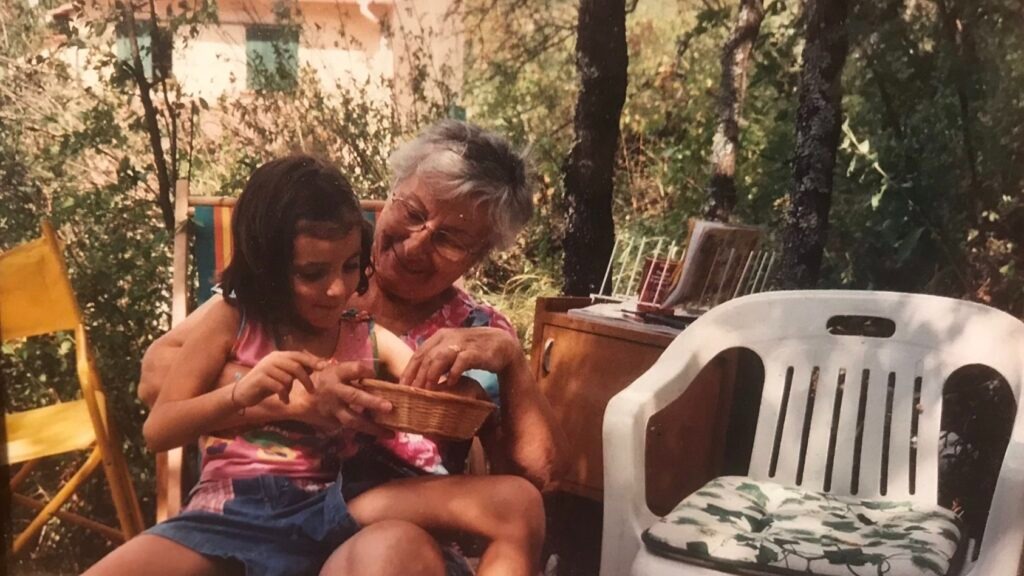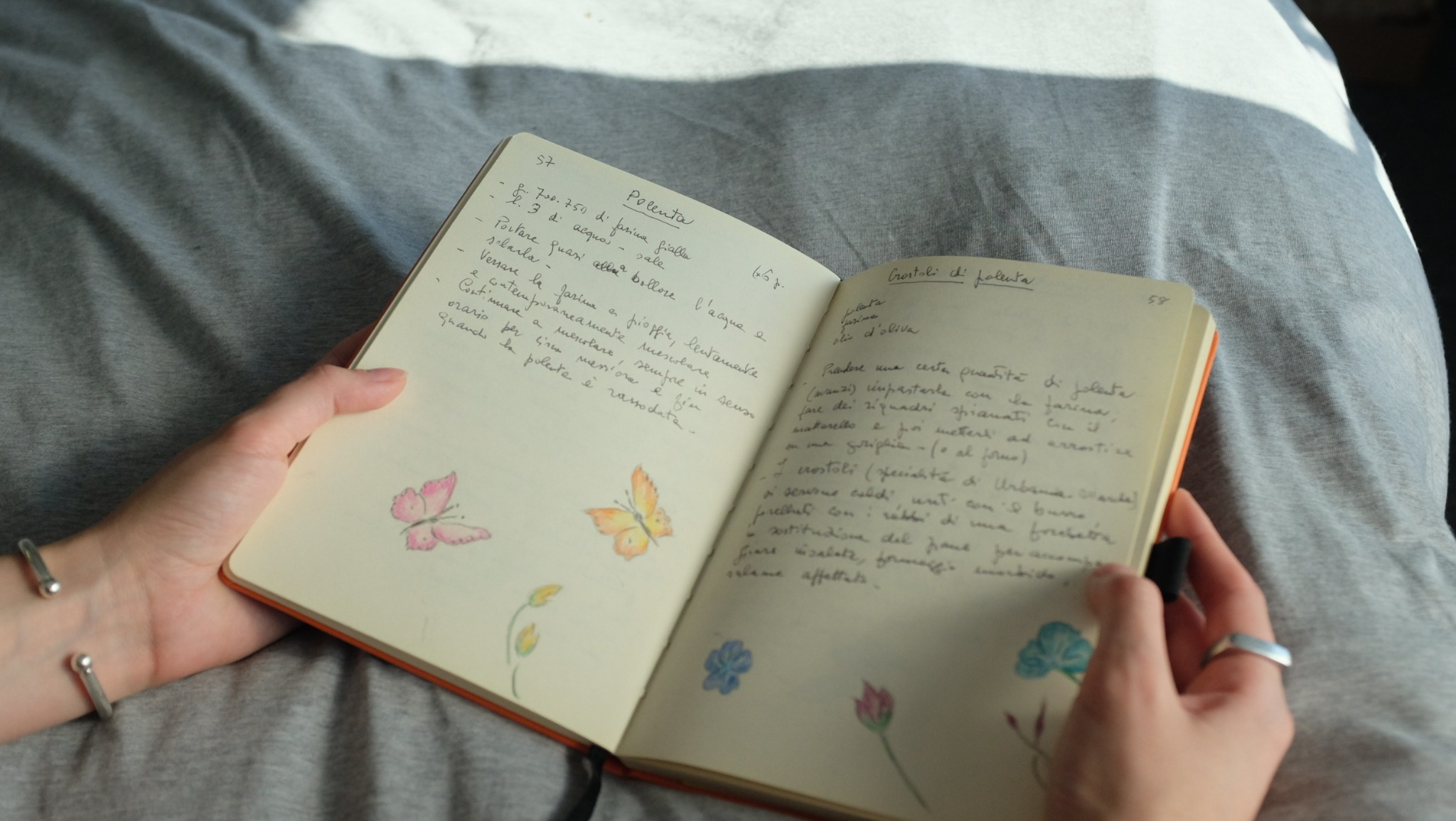CULTURAL FRITTATA |The delicious pages of our history
The magical power of family culinary traditions
When I moved to London, I didn't bring much with me: two suitcases, one carry-on and one checked, and a box that, after many adventures, I managed to have shipped from Italy. One thing that has always stayed with me through various moves is the orange Moleskine where my grandmother transcribed some of her recipes, adorned with her signature floral drawings. Family recipes are passed down through generations worldwide, tied to memories and stories kept in binders, notes, booklets, and sometimes just in memory. These recipes encapsulate an imperfect narrative and emotional heritage, which can be reproduced but never exactly replicated, still possessing the power to transport us back in time. For immigrants, recipes passed down for generations are sometimes a way to preserve their culture and traditions, creating new, unique traditions made of a mix of unusual ingredients. Thus, tradition is built not only through movements and cultural heritage but also personal tastes, which become sacred rituals for the taste buds when passed down.
My cousin Sirio was the first among Nonna Nevina's grandchildren to go live on his own. Concerned that he might not eat healthily enough, my grandmother decided to put together a small collection of simple recipes for him to take to his new home. A tradition was born. After that, Nevina created a personalised and unique little collection for each grandchild who moved out, with some of her most classic recipes, selected by culinary difficulty and based on what she deemed worth passing on—a natural move for a woman who always wrote her own story through memories and diaries. It is the booklet she created for me that has led me to reflect on the importance of cooking not only in world history but for those who inhabit the Earth, building cultural and personal traditions.
Journalist Clotilde Nogues, for instance, shares on Clever Gretel her family heirloom: a cookbook her mother Fabienne made for her at Christmas 2019. The book contains recipes personally written by various family members—even the cat contributed a little bit!—as well as photographs, drawings, and clippings. Lan Samantha Chang's story speaks of a file box that archives recipes. This archive tells her personal story of immigration and the cultural shock her parents faced when they moved from China to the small town of Appleton, Wisconsin, in the 1960s. Not being able to relate to the local cuisine—primarily composed of mushroom soup, tuna casserole, iceberg lettuce, and peanut butter—the family travelled miles to find Chinese ingredients, mixing them with local ones. The result is recipes (like iceberg lettuce stir-fry) that the writer holds dear, telling a personal memory of language barriers, social isolation and homesickness, but also cherished family memories of delicious 'improvisation.'
Books like Heirloom Kitchen, We Are La Cocina, and Together: Our Community Cookbook have highlighted the importance of family culinary traditions in recent years, especially for immigrants. Cooking has always been one of the ways people maintain a connection to their country of origin during their travels, sustain themselves, start businesses, and build a community in their new country.
This issue’s featured dish, Sole Meunière, also speaks of movement and memories. My grandmother, having lived in France during her childhood, often cooked this simple French dish, and the very name brings back memories of the smell of browned butter wafting through the kitchen.

Sole Meunière Recipe (for one)
Ingredients
- 1 sole (200g)
- 1 tablespoon flour
- 1 knob of butter
- Half a glass of white wine
- A few drops of lemon
- Parsley and salt to taste
- Salt the sole and coat it well with flour.
- Place it in a hot pan with butter and let it brown for 3-4 minutes on each side.
- Deglaze it with the white wine.
- Add some chopped parsley and a few drops of lemon.
This article is translated by the author from the Italian version of Cultural Frittata in RatPark Magazine.

0 Comments Add a Comment?